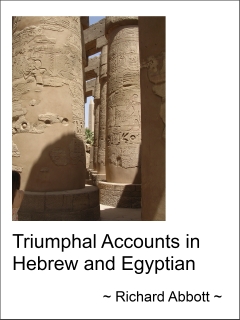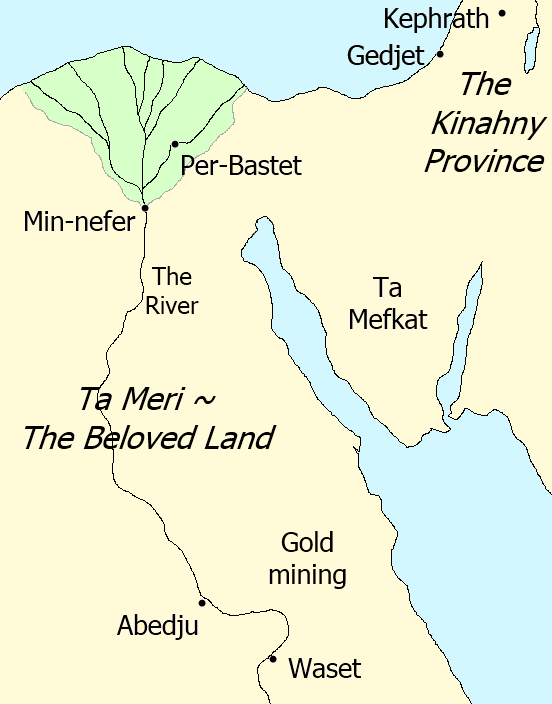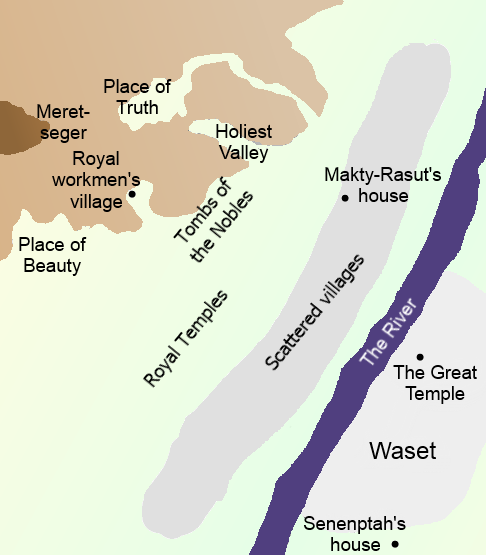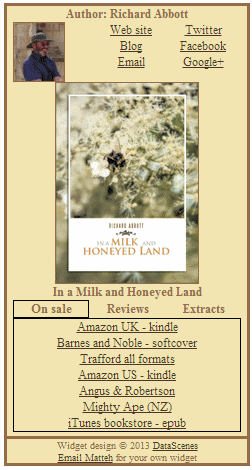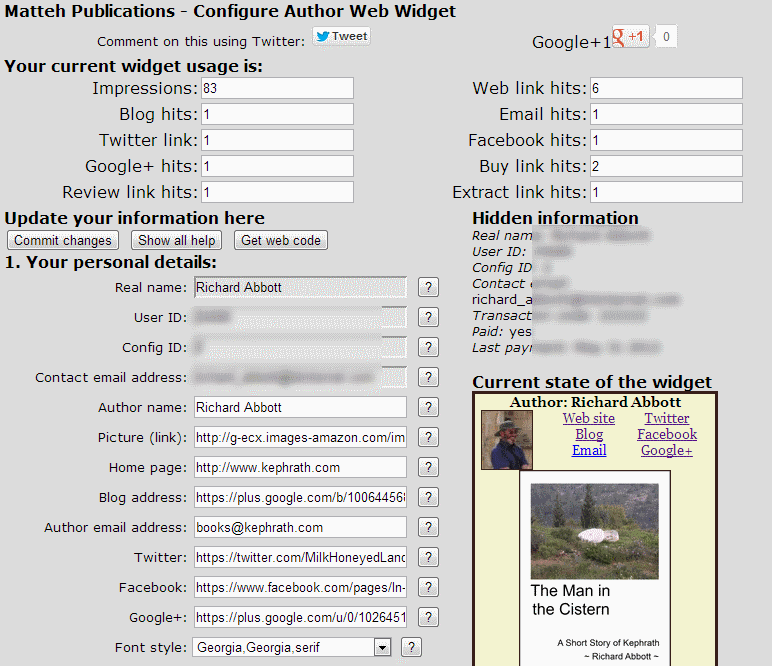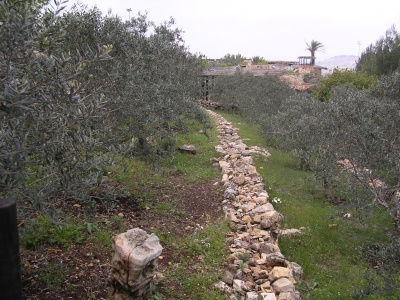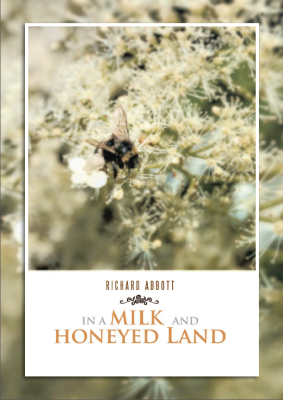This post was inspired by reading a fascinating and provocative blog article by Brian Rush (http://brianrushwriter.wordpress.com/2013/07/12/slaves-in-egypt/).
 I would recommend this article to others and do not disagree with some of the positions Brian is presenting. In particular (perhaps to reassure him and others) I completely agree with him that sacred traditions in general, and the Hebrew Bible in particular, contain mythic and spiritual elements and are best not absorbed simplistically or with a naive literalism. But… I think Brian significantly over-stated some issues of historical evidence, and as a result was rather too dismissive of the possibility of a historical root event to the Exodus tradition. I did put this into a response to the blog itself, but I suspect its excessive length tripped some kind of cut-off! The comment never made it to the blog.
I would recommend this article to others and do not disagree with some of the positions Brian is presenting. In particular (perhaps to reassure him and others) I completely agree with him that sacred traditions in general, and the Hebrew Bible in particular, contain mythic and spiritual elements and are best not absorbed simplistically or with a naive literalism. But… I think Brian significantly over-stated some issues of historical evidence, and as a result was rather too dismissive of the possibility of a historical root event to the Exodus tradition. I did put this into a response to the blog itself, but I suspect its excessive length tripped some kind of cut-off! The comment never made it to the blog.
Basically, I am suggesting that there are good reasons for supposing a historical basis for the narrative (and also that elements of that basis go back to the 2nd millennium BCE, but that is too long a subject for just now). To avoid getting ridiculously long I want to pick out a few of his statements and suggest that he was being a little too dogmatic about them. Essentially, I am arguing for a moderate position, rather than a dogmatic one in any direction. Each bullet point is taken directly from Brian’s article.
1. “an entire ethnic group, consisting of thousands, maybe tens of thousands, of individuals, were enslaved, men, women, and children, for over four centuries in a small (by modern standards) agricultural civilization on the Nile River”
Well, the claim is actually that a small family group went down to Egypt from Canaan – there is ample archaeological/textual evidence for such traffic – and were later enslaved as their numbers grew. The period of time is variously estimated in the Hebrew Bible from as little as 4 generations upwards, with “over four centuries” as the maximal estimate. There are two census figures at the exit given in Numbers, but these are open to several interpretations and should not be used in isolation for discarding the whole tradition.
2. “we should find in the Egyptian records plenty of evidence for the existence of an ethnic community of slaves … Egypt was not a major slave-owning nation until Alexandrian times. The great temples and monuments appear to have been built not by slaves but by free laborers. …something would have recorded regarding who owned all these slaves …In all the archaeological evidence unearthed to date, however, there is not even a mention of an ethnic group thousands of individuals strong kept in the country in bondage for centuries.”
Well, actually we do have such records for specific periods of time in the Middle and New Kingdoms (both 2nd mill BCE). There are lengthy lists of how many slaves were owned by whom and for what purpose, in many cases listing both their original and Egyptian names. As a single example, the vizier Rekhmire (c.1450BCE) depicted large numbers of foreign slaves (chiefly Semitic or Nubian) making bricks for a temple of Amun, watched by overseers. One overseer even complains that there is no straw to be had! Several NK pharaohs recorded hundreds or thousands of captives brought back – eg Amenhotep II claimed on one campaign to have returned with 89,600 captives… quite probably an inflated figure, but it gives some context.
3. “If the ancient Israelites had recreated and revived Hebrew to be their language, as the modern Israelis have done, there should be a tremendous linguistic influence from Egyptian on ancient Hebrew”
Ancient Hebrew was for some while almost indistinguishable from Canaanite and Phoenician, and there are a fair number of loan words from Egyptian – arguable though this could be a simple consequence of proximity. I personally find more compelling the fact that some of the literary forms of the oldest strata of the Hebrew Bible reflect Egyptian forms much more closely than Levantine or Mesopotamian. The literary forms do show “tremendous influence from Egyptian” on the oldest layers of text in the Hebrew Bible (I wrote a whole PhD on this topic! – see http://www.amazon.co.uk/Triumphal-accounts-Hebrew-Egyptian-ebook/dp/B009UETQD4/).
4. “Ancient Hebrew is linguistically related to other Semitic languages of the time, especially those of Canaan, Akkad, Babylon, and Phoenicia. It is not related in any significant way to Egyptian. As a written language, ancient Hebrew used an alphabet, while ancient Egyptian used ideograms and pictograms initially and evolved this system into a syllabary over time”
Actually there is a growing recognition that the proto-Canaanite alphabet originally derived from Egyptian signs (see for example Hamilton, The Origin of the West Semitic Alphabet). From earliest days the Egyptian sign list contained single-consonant signs which could have been (and in some cases were) used as an alphabet, but Egypt persistently rejected this possibility, preferring (I think) the greater metaphoric possibilities of the full sign list. Now I do agree that ancient Hebrew is more closely related to some of the languages you list, though actually the link to Akkadian is more tenuous. Ancient Egyptian is reckoned to be an Afro-Asiatic language, hence a cousin if you like. But purely in terms of signs the Phoenician alphabet, and so ultimately the English alphabet I am using here, was most likely derived from Egyptian signs.
5. “The political and religious traditions and institutions of ancient Israel were radically different from those of Egypt as well.”
I have already vastly exceeded a reasonable length of reply, but oddly enough I would argue the opposite, that both Judaism and Christianity owe a considerable, and often unacknowledged, debt to Egyptian religion. Yes, the pharaoh was perceived as related to the divine – and it is a fascinating study to see how equivalent phrases are used in the early Hebrew Bible about the god Yahweh, and in Egyptian writing about the pharaoh. But outside of the Amarna period, there was a general concept of personal access of ordinary to the gods without the need of an intermediary – a theme which is very prominent in both Judaism and Christianity. Ironically, Akhenaten’s religious reforms, whilst on a simplistic level looking like monotheism, actually tried to tie the people into a rigid form of worship in which deity was inaccessible except via the ruler.
Now, as I mentioned, I am not arguing that each and every word in the Exodus narrative should be taken at face value. The original text, and the sundry textual changes that happened over the centuries since then, were intended to serve many purposes other than a naive record of some cool events. But contra Brian, I think we do have grounds for suspecting a real, 2nd millennium root event which one might say seeded the tradition in the first place.


 I came away from Ken Parejko’s Across the Waters of Time: Pliny Remembered with very mixed feelings. On the plus side – and these are very large plus features – this is a beautifully conceived book, with a powerful and compelling imaginative sweep and some marvellously lyrical passages of writing. The presentation of Pliny’s interior thought-world, and its evolution through his lifetime, is splendid, and the historical events Ken chooses to illuminate this come over as pivotal to Pliny, and in some cases centrally important to the entire first century AD. It is a book which can be highly recommended in these grounds alone.
I came away from Ken Parejko’s Across the Waters of Time: Pliny Remembered with very mixed feelings. On the plus side – and these are very large plus features – this is a beautifully conceived book, with a powerful and compelling imaginative sweep and some marvellously lyrical passages of writing. The presentation of Pliny’s interior thought-world, and its evolution through his lifetime, is splendid, and the historical events Ken chooses to illuminate this come over as pivotal to Pliny, and in some cases centrally important to the entire first century AD. It is a book which can be highly recommended in these grounds alone.
 Indeed, in many places the book comes over more as history than fantasy, and you might find yourself, like me, trying to puzzle out where and when the story is set. The basic “feel” is, I suppose, European rather than Asian or African, but with its own inventive and unique features. Family lineage, and personal names, are identified through maternal rather than paternal links, a feature that I found particularly interesting because of similar choices I make in my own, explicitly historical writing.
Indeed, in many places the book comes over more as history than fantasy, and you might find yourself, like me, trying to puzzle out where and when the story is set. The basic “feel” is, I suppose, European rather than Asian or African, but with its own inventive and unique features. Family lineage, and personal names, are identified through maternal rather than paternal links, a feature that I found particularly interesting because of similar choices I make in my own, explicitly historical writing. I would recommend this article to others and do not disagree with some of the positions Brian is presenting. In particular (perhaps to reassure him and others) I completely agree with him that sacred traditions in general, and the Hebrew Bible in particular, contain mythic and spiritual elements and are best not absorbed simplistically or with a naive literalism. But… I think Brian significantly over-stated some issues of historical evidence, and as a result was rather too dismissive of the possibility of a historical root event to the Exodus tradition. I did put this into a response to the blog itself, but I suspect its excessive length tripped some kind of cut-off! The comment never made it to the blog.
I would recommend this article to others and do not disagree with some of the positions Brian is presenting. In particular (perhaps to reassure him and others) I completely agree with him that sacred traditions in general, and the Hebrew Bible in particular, contain mythic and spiritual elements and are best not absorbed simplistically or with a naive literalism. But… I think Brian significantly over-stated some issues of historical evidence, and as a result was rather too dismissive of the possibility of a historical root event to the Exodus tradition. I did put this into a response to the blog itself, but I suspect its excessive length tripped some kind of cut-off! The comment never made it to the blog.
